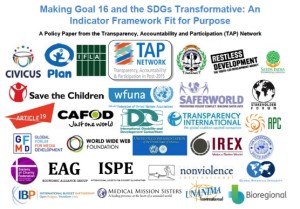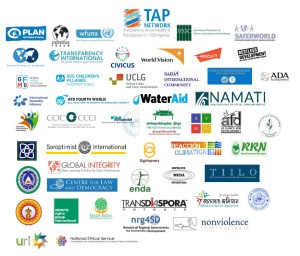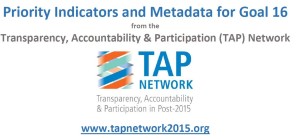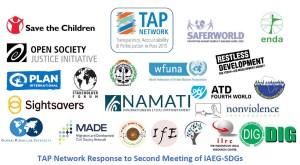Expanding the Data Ecosystem: The role of “Non-Official” Data for SDG Monitoring and Review – March 2017
This advocacy paper, produced by the TAP Network for the 48th Session of the UN Statistical Commission and the 5th meeting of the IAEG-SDGs, discusses the role of “non-official” data providers in SDG monitoring and review. It presents challenges to overcome between NSOs and civil society, and concrete recommendations for tackling some of these challenges.
 Loading...
Loading...
The TAP Network Global SDGs Indicator position paper identifies some of the key areas for further collaboration and work between the IAEG-SDGs, the Official Statistical community and stakeholders more broadly, and outlines some concrete recommendations on how we can best undertake this work together.
Download: TAP Network Global SDGs Indicators: building a Framework that is Fit for Purpose
Download: Stakeholder Text Amendments to Global Indicators Draft Resolution
Download: Draft Decisions for 47th Sessions of UN Statistical Commission – 11 March 2016
The following priority indicators and recommendations and corresponding Metadata for Goal 16 Indicators are the result of months of work and feedback from TAP Network organizations, including the inputs of dozens of experts from CSOs working closely on each of these issues. This includes some of the world’s foremost civil society data providers and users from, and experts on sustainable development metrics and measurement.
Download: TAP Network Priority Indicators and Metadata for Goal 16
Download: TAP Network Response to Second Meeting of IAEG
Download: TAP Network Inputs Consultation on “Grey” Indicators

TAP Network SDG Indicators Position Paper
Key Messages
- As the foundation underpinning the goals and targets, the indicator framework must be fit for purpose to ensure that the Sustainable Development Goals (SDGs) are truly transformative and advances transparency, accountability and inclusive citizen participation.
- Evidence from across the world shows that it is feasible to measure proposed Goal 16. A wide variety of data already exists for measuring governance, peace and justice, and any indicators for Goal 16 must be reflective of this reality.
- To capture the full story of progress towards the realization of Goal 16 and all other SDGs, indicators should be developed ranging from 1) input, output, and process indicators to show steps taken to address the problem, 2) outcome indicators to show changes on the ground, and 3) impact indicators to show whether these changes are contributing to improvements in people’s lives.
- Any indicator framework should draw on both official as well as third party data sources – including data produced by the UN and other multilateral institutions, civil society organizations, research institutions, academia and the private sector – and should use a wide range of data types, including administrative data, experiential, factual and perception based surveys, and expert assessments.
- We must collectively use the Post-2015 process as an opportunity to significantly improve, widen and deepen data availability over the next fifteen years through increased capacity support, innovation and partnerships between national statistics systems and third parties.
- Civil society, the media and other development stakeholders must have political and legal freedom to produce, access, and use data in order to hold governments to account.
Register here to SIGN-ON your organization to the TAP Network Accountability Position Paper: we are accepting SIGN-ON on a rolling basis
[wpgform id=’1244′]
TAP Non-Official Data Discussion Paper
TAP Network Open Letter Response to UN Technical Report on SDG Indicator Framework, March 2015



